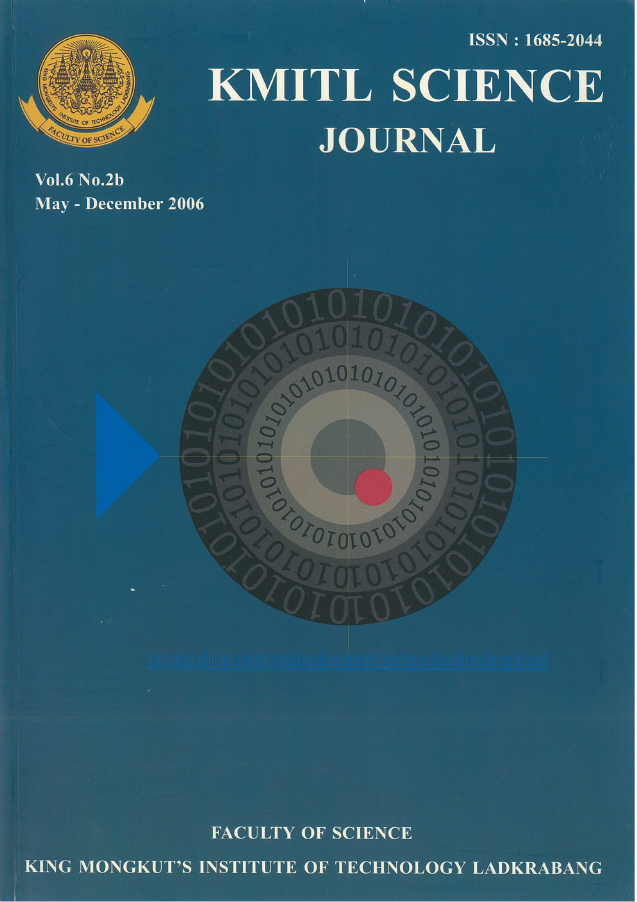Inhibitory Effect of Some Medicinal Plants Essential Oils on Post-Harvest Fungal Disease of Citrus Fruits
Main Article Content
Abstract
The consequence in misuse of chemical biocides for controlling pest and disease has drawn the attention of policy makers in development of methods potentially available in nature for the purpose. One of the new and safe methods of controlling pest and disease is the usage of essential oils from medicinal plants. In the present investigation, inhibition of radical growth and spore germination of post-harvest important fungi (Penicillium italicum, P. digitatum and Alternaria citri) exposed to the different concentrations of essential oils of some medicinal plants (Thymus vulgaris, Mentha piperita, Satureja hortensis, Cuminum cyminum and Trachyspermum copticum) were studied. The concentrations of essential oils examined were 250, 500 and 1000 mg/l. All the data were statistically analyzed. The results showed that the radial growth of P.italicum was completely inhibited by Th.vulgaris (500 mg/l), S. hortensis and T. copticum (1000 mg/l). The radial growth of P.italicum exposed to C. cyminum and M. piperita essential oil (1000 mg/l) was decreased (57.17% and 36.8%, respectively). The radial growth of P.italicum was also completely inhibited by Th.vulgaris, T. copticum (500 mg/l) and S. hortensis (1000 mg/l). The radial growth of P. digitatum exposed to essential oils of C. cyminum and M. piperita were decreased 22.8% and 12.15%, respectively. A. citri’s radial growth was completely inhibited by Th.vulgaris (250 mg/l), T. copticum and S. hortensis (500 mg/l), C. cyminum (1000 mg/l). M. piperita essential oils (1000 mg/l) decreased the radial growth of A. citri to be 59.44%. Therefore, the inhibitory potency of essential oils on the post-harvest disease of citrus fruits was as Th.vulgaris > T. copticum > S. hortensis > C. cyminum > M. piperita and the extent of inhibition of fungal growth depended on the concentration of essential oils usage. These results clearly indicated that it is necessary to focus on practical application of the essential oils for inhibition of post-harvest pathogen growth and these compounds could be used as a substitute for chemical fungicides since they are natural and not toxic to humans.
Keywords: Essential oils, Medicinal plants, Post-Harvest disease, Bio-control
Corresponding author: E-mail: cast@kmitl.ac.th
Article Details
Copyright Transfer Statement
The copyright of this article is transferred to Current Applied Science and Technology journal with effect if and when the article is accepted for publication. The copyright transfer covers the exclusive right to reproduce and distribute the article, including reprints, translations, photographic reproductions, electronic form (offline, online) or any other reproductions of similar nature.
The author warrants that this contribution is original and that he/she has full power to make this grant. The author signs for and accepts responsibility for releasing this material on behalf of any and all co-authors.
Here is the link for download: Copyright transfer form.pdf
References
[2] Arras, G. and Arru, S. 1998 Fungitoxic Activity of Essential Oils Against Postharvest Citrus Pathogens. Sixth SIPV annual meeting.
[3] Bishop, C. D. and Reagan, J. 1998 Control of the Storage Pathogen Botrytis cinerea on Dutch White Cabbage (Brassica oleracea var. capitata) by Essential Oil of Melaleuca alternifolia. J. Essent. Oil. Res., 10, 57-60.
[4] Caccioni, D.R.L. and Guizzardi, M. 1994 Inhibition of Germination and Growth of Fruit and Vegetable Postharvest Pathogenic Fungi by Essential Oil Components, J. Essent. Oil. Res., 6, 173-179.
[5] Deans, S.G. 1991 Evaluation of Antimicrobial Activity of Essential (Volatile) Oils. In: Modern Methods of Plant Analysis, Vol. 12, Essential Oils and Waxes. Edited by H.F.Linskens and J.F.Jackson, 309-320, Springer Velrlag, Berlin-Heidelberg.
[6] Dwividi, S.A. and Dubey, B.L. 1993 Potential Use of Essential Oils of Trachyspermum Ammy Against Seed Born Fungi of Guar (Cyamopsis tetragonoloba L.). Mycopathologia, 121(2), 101-104.
[7] Hulse, L.H. 1982 Food Science and Nutrition: The Gulf Between Rich and Poor. Science, 216, 1291-1294.
[8] Moreira, M. R., Ponce, A.G., Del Valle, E. and Roura, S.I. 2005 Inhitory Parameters of Essential Oils to Reduce a Foodborne Pathogen. Lebensmittel-Wissenschaft Unde-Technology, 38, 565-570.
[9] Moretti, M.D.L., Peana, A.T., Franceschini, A. and Carta, C. 1998 In vivo Activity of Salvia officinalis Oil Against Botrytis cinerea, J. Essent. Oil. Res. 10, 157-160.
[10] Phillips, D.J. 1984 Mycotoxins as a Postharvest Problem, In: Postharvest Pathology of Fruits and Vegetables: Postharvest Losses in Perishable Crops. Edited by H.E.Moline, Agricultural Experiment Station, Univ. of California, Berkeley, Publ.NE-84:50-54.
[11] Platto, A., Roberts, D.D. and Roberts, R.G. 2003 Evaluation of plant Essential Oils as Natural Postharvest Disease Control of Toronto (Lycopersicon esculentum L.) Acta Horticulturae, 628, 737-745.
[12] Skandamis, P., Kaotsoumanis, K., Fasseas, K. and Nychas, G.J.E. 2001 Inhibition of Oregano Essential Oil and EDTA on E.coli O157:H7. Italian Journal of Food Science, 13, 55-65.
[13] Soliman, K.M. and Badeaa, R.I. 2002 Effect of Oil Extracted from Some Medicinal Plants on Different Mycotoxigenic Fungi. Food and Chemical Toxicology 40, 1669-1675.
[14] Wilson, D.M. and Nuovo, G.J. 1973 Patulin Production in Apple Decayed by Penicillium expansum. Apple Microbiology 26, 124-125.


